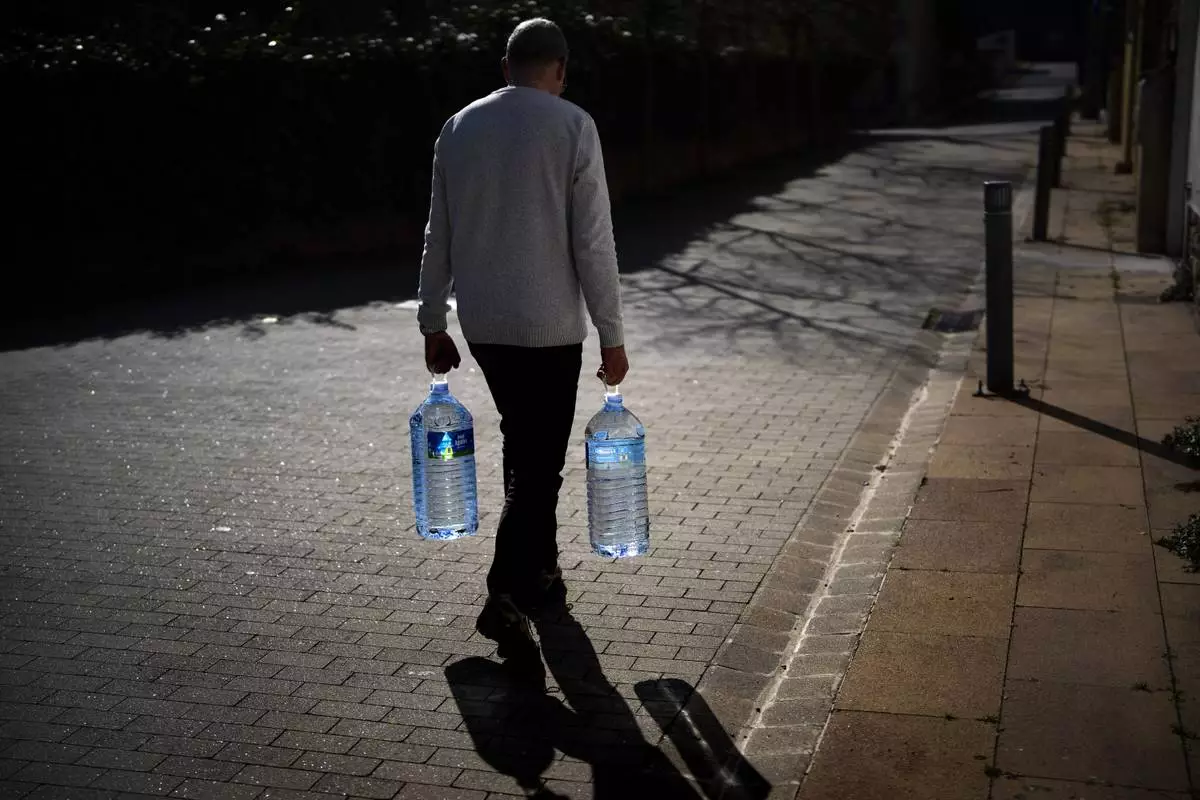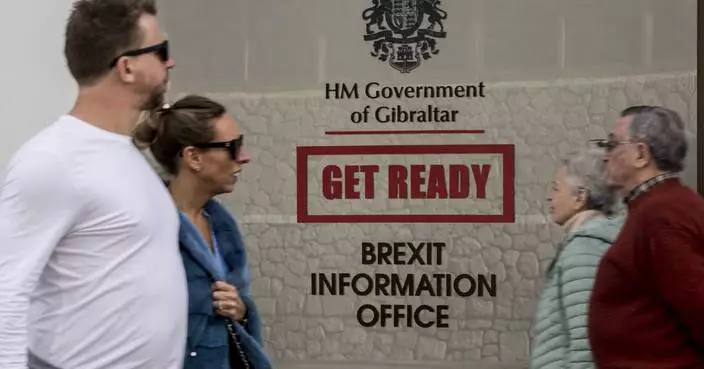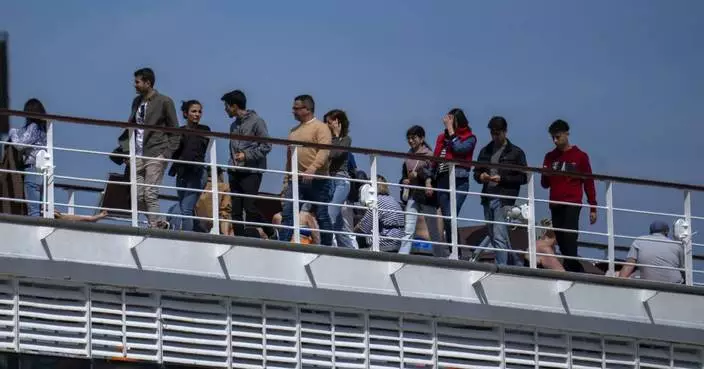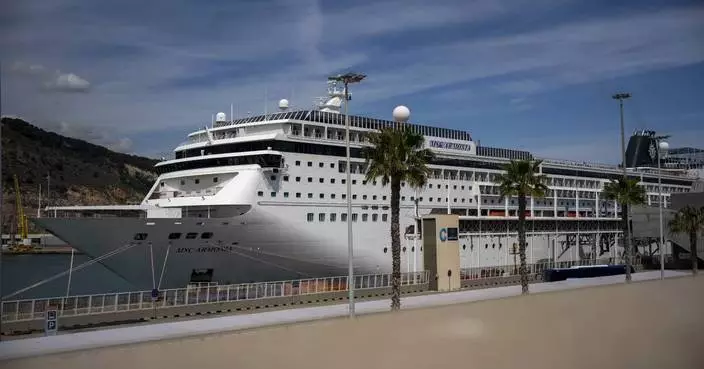The most serious threat to Spain's national unity in decades is likely to come to a head in the coming days with attention focused on whether Catalonia will make good on its promise to declare independence — and what form that declaration may take if it comes to pass.
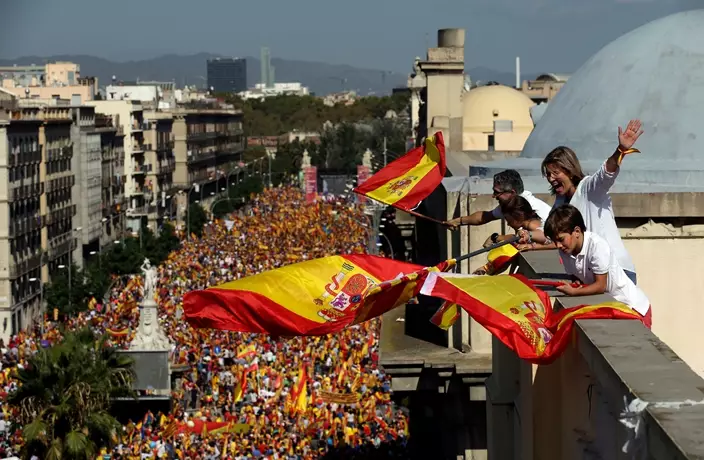
People on a rooftop wave Spanish flags during a march in downtown Barcelona, Spain, to protest the Catalan government's push for secession from the rest of Spain, Sunday Oct. 8, 2017. (AP Photo/Manu Fernandez)
Eyes will be focused on the regional Catalan parliament Tuesday when the region's president, Carles Puigdemont, speaks about the current political impasse. It is not yet clear if he will declare the restive region's independence from Spain, and whether such a declaration would be purely symbolic.
It is clear, however, that such a move would meet vehement opposition from Spanish authorities.
Here is the status of the standoff between the affluent, industrial region of Catalonia and the central Spanish government in Madrid.
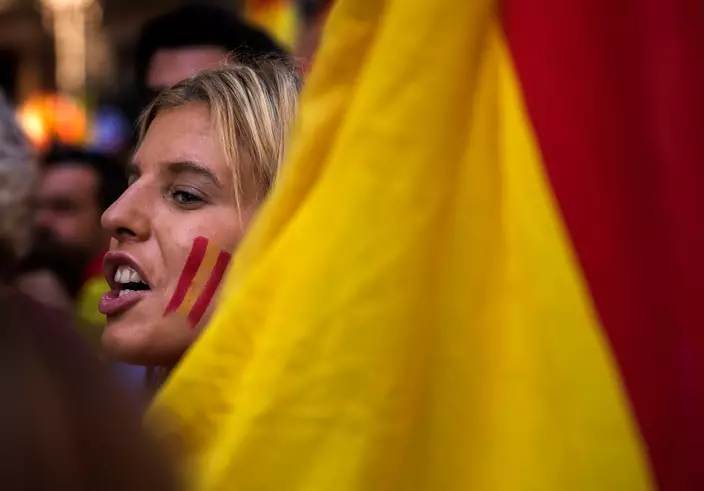
A demonstrator shouts slogans as they march to protest the Catalan government's push for secession from the rest of Spain in downtown Barcelona, Spain, Sunday Oct. 8, 2017. (AP Photo/Emilio Morenatti)
____
A REFERENDUM MARRED BY VIOLENT CLASHES
The conflict over a self-determination vote has been dragging on for six years but Catalan separatists staged an independence referendum on Oct. 1 despite Spain's insistence it was illegal. Spanish police, ordered to prevent the referendum, clashed with voters and supporters, and Catalan officials said over 900 people were injured. Videos of police pulling voters out by their hair and kicking them on stairs flashed around the world. An Interior Ministry official later apologized for the injuries but laid the blame on the Catalan government for having encouraged people to vote.

Spanish police officers watch as demonstrators march to protest the Catalan government's push for secession from the rest of Spain in downtown Barcelona, Spain, Sunday Oct. 8, 2017. (AP Photo/Emilio Morenatti)
____
A QUESTIONABLE RESULT
Catalonian officials claim the referendum results give them a mandate to create a new country. But less than half of the region's electorate voted, and the way the referendum was held has raised a host of complaints about its legality and validity. As Spanish police started seizing ballot boxes, Catalan officials allowed voters to cast ballots wherever they liked. Catalan officials say the final numbers show 90 percent of votes in favor of independence and regional President Carles Puigdemont proclaimed a victory. Spain cried foul and most governments backed Madrid. No one seems eager to recognize Catalonia, including the European Union.
____
BIG BUSINESS EXODUS
The influential business community has indicated its unhappiness with the prospect of independence under current circumstances, Catalonia's two major banks, CaixaBank and Banco Sabadell, energy giant Gas Natural and the company that provides Barcelona's water have all decided in recent days to move their headquarters to other parts of Spain because of a desire to stay within the EU. Some believe this will lead Catalan political leaders to be more cautious about declaring independence.
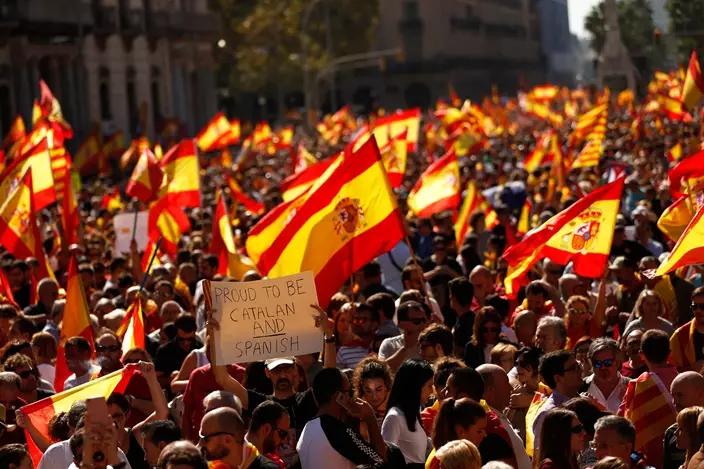
A man holds up a sign during a march in downtown Barcelona, Spain, to protest the Catalan government's push for secession from the rest of Spain, Sunday Oct. 8, 2017. (AP Photo/Francisco Seco)
___
WHY DOES CATALONIA WANT INDEPENDENCE NOW?
Many Catalans have long highlighted the region's differences from the rest of Spain but the latest surge for independence began in 2010, when Spain's top court struck down key parts of a charter that would have granted Catalonia greater autonomy and recognized it as a nation within Spain.
Since then, hundreds of thousands of residents have thronged onto the streets every Sept. 11, a Catalan holiday, to demand independence. Spain's recent financial crisis and the harsh austerity measures that followed generated more support for secession. Catalans frequently complain they contribute more in taxes to the Spanish treasury than they get back.
___
WHAT HAPPENS NEXT?
It's not clear what might happen if Catalonia does actually try to secede. Spanish Prime Minister Mariano Rajoy has vowed that Spain will not be divided and says he will use any lawful measure to stop the separatists. He said this includes the use of Article 155 of the Spanish Constitution, which would allow the central government to take control of the governance of a region "if the regional government does not comply with the obligations of the Constitution."
A split raises dozens of questions with no answers yet. Key issues include national boundaries with the rest of Spain and France, as well as its relationship with the EU. It's unclear how Catalonia can gain control of its defense and foreign affairs, tax collection and management of airports, ports, rail transport and nuclear stations, most of which are currently managed by Spain.
The European Union has already said Catalonia would be expelled from the bloc and its shared currency, the euro, if it declares independence. To get back in, it would have to re-apply — a lengthy and uncertain process.



